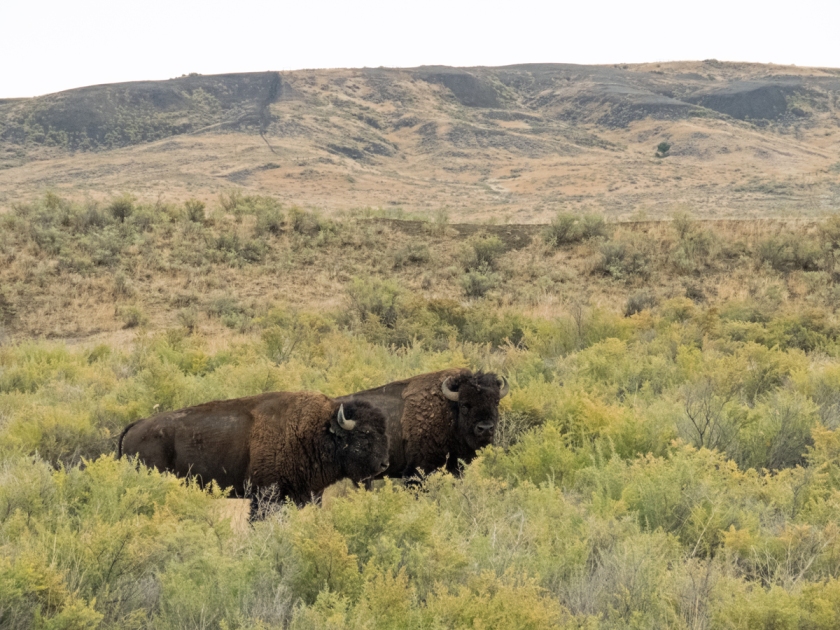
My fourth trip following bison tracks from past to present is over. The unpacking part starts now: not just camping and photography gear, field sketches and notes, but also new perspectives and stories from people who know bison history and bison from intense exposure.
I followed this trail to inform an artist-in-residence project. I have met historians, archeologists, geologists, bison managers, rangers, restorationists, communicators, and interpreters. I have put thousands of miles on my car and truck. And I have only started. Bison trails are more straight and true than their historic path from the Ice Age to today.

It wasn’t until I picked up a book at First People’s Buffalo Jump in Montana that I learned about the Pablo-Allard herd and Canada’s contribution to saving wild bison. It wasn’t until I talked to a historian at Elk Island National Park in Alberta that I learned there was once a Buffalo National Park that failed miserably. At Elk Island, the superb interpreters revealed how challenging it is to manage bison on defined land base within fences. Despite a robust relocation program that most recently airlifted bison to Banff National Park, Elk Island completed public outreach on alternatives to control the population, including hunting in the park.

One constant is the type of people involved with bison. They are passionate, committed, and generous with their knowledge. They want people to be drawn to bison, to make them an integral and eternalpart of our natural heritage. “Bison nerds” are a small but tight international group committed to making sure that these animals don’t disappear forever. They are ecologically extinct — there are no free-roaming herds — but conservation herds shaped by nature still dot the landscape.
Since these large, migratory animals spread across North America, driving grassland ecology, the bison trail leads to a variety of landscapes and places, . 

 Plains Indian tribes followed these animals across North America, leaving their own trail, including camps, kill sites, and ritual locations. My first visit to a buffalo jump led to places where I could understand communal hunting, from Madison Buffalo Jump to the superb Head-Smashed-In Buffalo Jump. This World Heritage site is the best preserved in the world with a phenomenal interpretive center.
Plains Indian tribes followed these animals across North America, leaving their own trail, including camps, kill sites, and ritual locations. My first visit to a buffalo jump led to places where I could understand communal hunting, from Madison Buffalo Jump to the superb Head-Smashed-In Buffalo Jump. This World Heritage site is the best preserved in the world with a phenomenal interpretive center.

Buffalo led a huge parade of life in their wake as they shaped the landscape. I caught sight of many creatures that followed bison, but wondered about all the animals that disappeared with wild bison.
Along the way, I have met so many wonderful, caring, and friendly people; walked so many beautiful landscapes; imagined the sounds and sights of prairies once teeming with life. It is hard to unpack it all and assemble the important bits into a story that will inspire others to experience the buffalo trail for themselves. But I will try.
